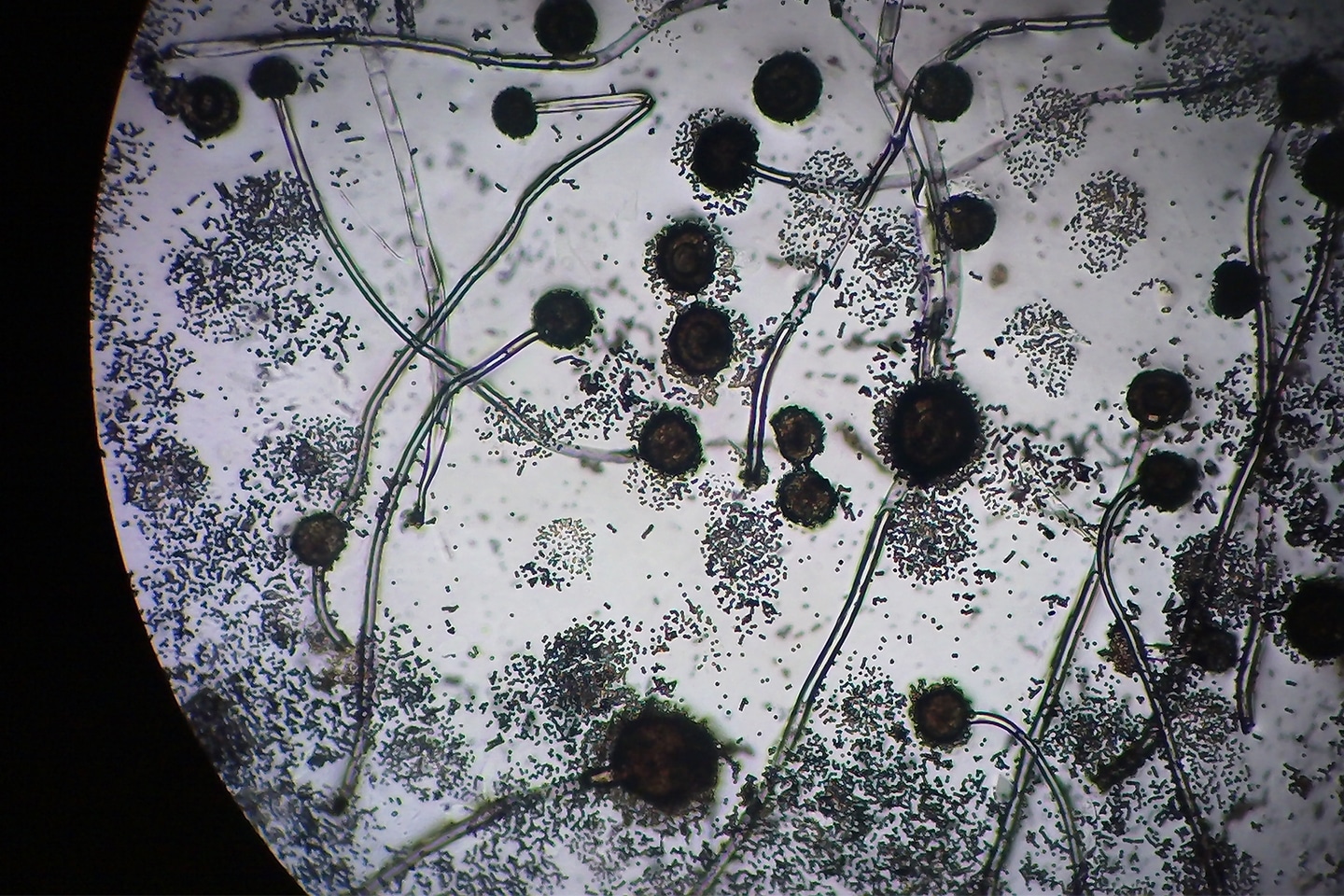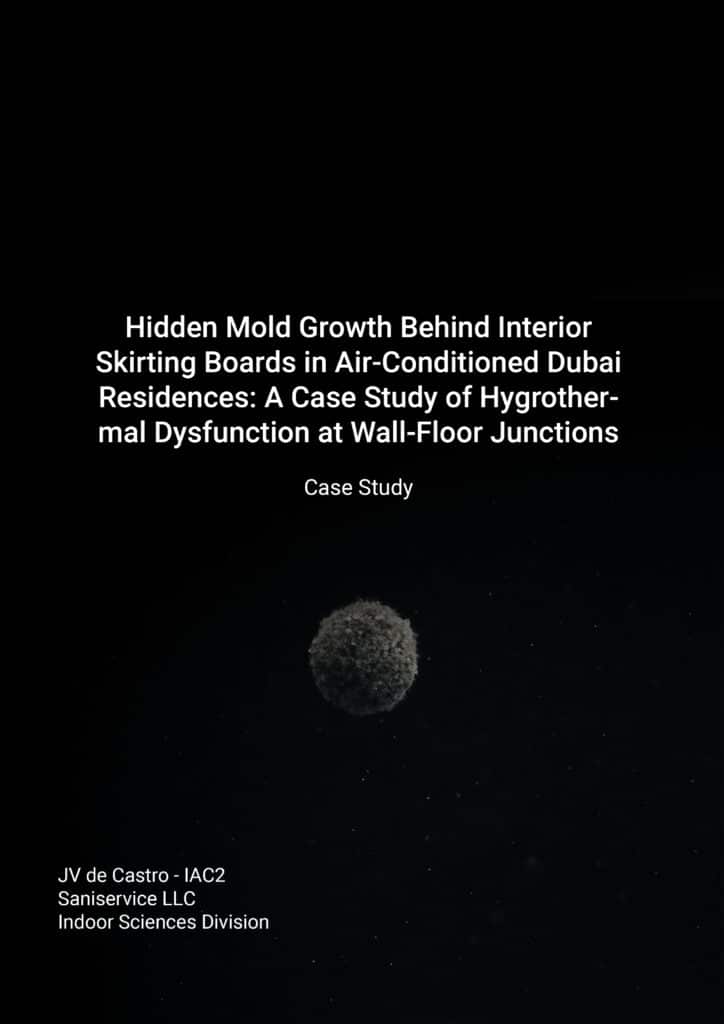
Hidden Mold Case Study: The Invisible Risk
(Hidden Mold Case Study) In Gulf region homes, persistent health complaints such as rhinitis, cough, and eye irritation often occur despite the absence of any visible moisture or mold. One Dubai family’s experience illustrated how a meticulous cleaning regimen could not prevent recurring symptoms. The mysterious health issues consistently improved when family members spent time away from the villa, deepening concern about the home’s environment.
Investigation Reveals Hidden Mold
Expert indoor air quality assessors applied a thorough diagnostic process: air and surface sampling, moisture analysis, and thermal imaging at wall-floor junctions. Airborne mold spore counts indoors were found to be extremely elevated compared to outdoor levels. Thermal scans identified cold spots at skirting board interfaces, and moisture measurements at these junctions far exceeded safe thresholds. Despite no visible damage, these hidden areas provided prime conditions for mold proliferation.
Download the full Case Study here.
Why Does Mold Go Undetected?
The secret lies in a combination of building design and climate:
- Skirting boards conceal cavities where cold air, moisture, and organic materials meet.
- In Dubai, the continuous use of air conditioning creates cold, dense air pools near the floor, with high relative humidity at wall-floor junctions.
- Vapour pressure differences—especially during humid seasons—drive humid air indoors, causing condensation on cold surfaces.
- Poor airflow behind skirting boards means trapped moisture remains for extended periods, out of sight.
Confirming the Problem
Surface swab tests behind the skirting boards revealed extremely high mold spore counts—up to 20 times greater than control surfaces on exposed walls. The dominant fungal types were those known to trigger mycotoxins and respiratory issues. The physical removal of skirting boards revealed widespread mold colonization, with discolored and fuzzy growth across over three-quarters of the hidden surfaces, even in homes where leaks were not present.
Download the full Case Study here. (Hidden Mold Case Study PDF)
Successful Remediation
To resolve the situation:
- Skirting boards were carefully removed and replaced.
- Affected surfaces were thoroughly cleaned with professional-grade equipment and treated with antimicrobial and fungicidal products.
- Dehumidification and air movement restored moisture levels to safe standards.
After remediation, air and surface tests confirmed that mold levels had returned to safe and healthy norms, which coincided with complete resolution of the family’s health issues.
Unique Gulf Region Challenges
The case highlights factors unique to the Gulf’s residential environment:
- Absence of insulation at critical junctions means cold bridging is common.
- Continuous air conditioning cycles and outdoor heat create strong temperature differentials and internal humidity pockets.
- MDF skirting boards, often found in UAE homes, are especially prone to absorbing moisture, swelling, and supporting mold growth.
- Design features intended for aesthetics can unintentionally foster unhealthy living conditions.
Practical Advice for Prevention
New Homes:
- Incorporate thermal breaks and continuous insulation at wall-floor junctions.
- Use moisture-resistant materials below skirting boards and consider designs that allow for better airflow.
Existing Properties:
- Maintain lower indoor humidity, ideally below 45%.
- Improve airflow circulation, especially near the floor.
- Inspect and monitor moisture levels at wall-floor junctions, and replace skirting boards with ventilated ones if problems persist.
Clinical Implications
Unexplained, recurring respiratory symptoms in modern homes may have environmental causes not immediately apparent. When multiple family members are affected, symptoms improve during travel, and conventional cleaning offers no relief, environmental assessment should be considered essential.
Hidden mold behind skirting boards is an overlooked but solvable problem in Gulf region homes. Proper building design, targeted inspections, and robust remediation strategies protect both health and property.
Academia.edu Link
This case study is the culmination of two years of detailed inspections and data analysis conducted by our expert team at Saniservice. Remarkably, the hidden mold scenario described here represents the root cause found in nearly 60% of all mold-positive homes we have inspected across Dubai, UAE.
Hidden molds thriving behind interior skirting boards and wall-floor junctions pose a silent but serious risk to health and property—especially in climate conditions like Dubai’s, where continuous air conditioning and common building practices create perfect conditions for mold growth.
If you own a home in Dubai or manage properties here, this case study is essential reading. It demystifies the causes, symptoms, and remediation of these pervasive hidden molds and offers practical prevention strategies tailored to our unique environment.
Don’t let hidden molds silently affect your family’s health or your property value. Download the full case study today and empower yourself with knowledge that can make a real difference.




Leave a Reply